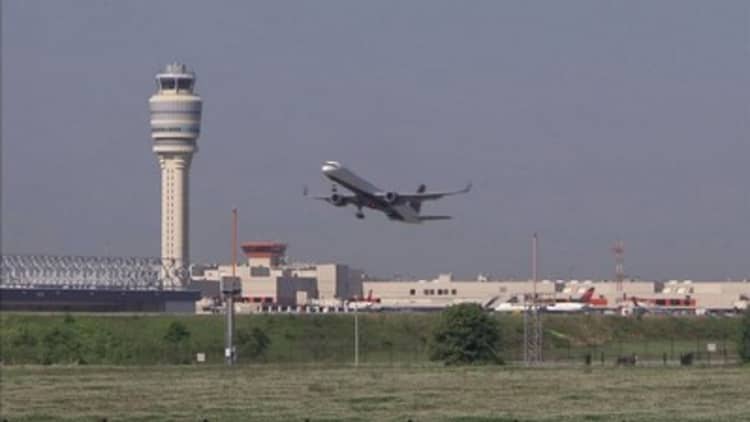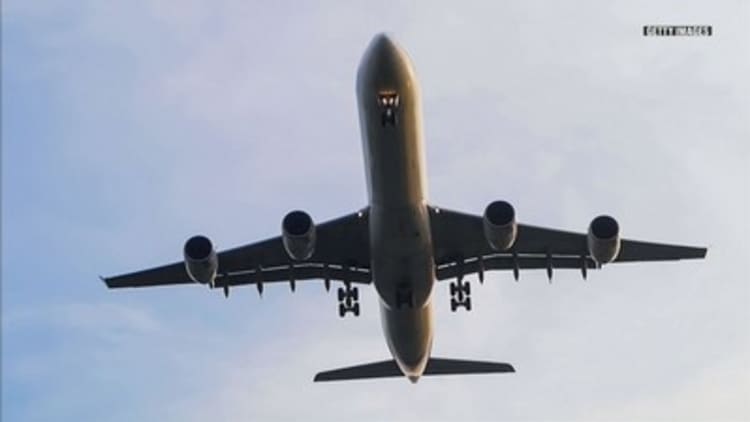
Temperatures are soaring in Phoenix, which means a lot of airplanes aren't.
Dozens of flights at Arizona's Phoenix Sky Harbor airport were delayed or canceled on Monday and Tuesday, after temperatures reached 120 degrees.
The heat is especially affecting flights on smaller aircraft, particularly flights on Bombardier CRJ planes, an American Airlines spokesman said.
American Airlines contracts regional flights under the American Eagle name to Mesa Airlines and SkyWest, which fly the Bombardier CRJ planes to and from Phoenix. On average, American Eagle has 90 departures and 90 arrivals daily, the American Airlines representative said in an email to CNBC.
As of Tuesday morning, seven flights had been delayed, and 50 flights had been canceled since Monday.
The CRJ planes have a maximum operating temperature of 118 degrees, which was just below the threshold.
Bombardier was not immediately available for comment.

Larger planes made by Boeing and Airbus have maximum operating temperatures of 126 and 127 degrees, respectively.
The real problem with flying in hot temperatures is similar to the problem faced in high altitudes: thin air. Hotter air is less dense, which means there is less air beneath the wings for lifting the aircraft and less air to flow through the jet engines, Boeing spokesman Bret Jensen said in an email.
To compensate, Jensen said, Boeing sells a "hot and high" package to its customers for flights in hot weather or high altitude environments.
"This equips the airplane with slightly more thrust and slightly larger control devices on the wing," Jensen said.
Phoenix Sky Harbor airport also has longer runways to accommodate flights on hot days. It also takes other measures, such as keeping air-conditioned trailers on the tarmac for ground crews, encouraging employees to take frequent breaks or postponing nonessential work altogether.
The highest temperature Phoenix has ever experienced is 122 degrees, recorded on June 26, 1990, according to David Harwell, a spokesman for the Phoenix city government's aviation department. At the time, many airlines did not even have performance data for flights at that temperature, but have mostly updated their information for flights in the 122-plus range, he said.
The hottest temperature ever recorded on Earth is in dispute, but a region in Kuwait hit roughly 129 degrees in 2016, and one weather station in California's Death Valley recorded a temperature of 134 degrees in 1913.
WATCH: Boeing looks to leave its pilots on the ground



